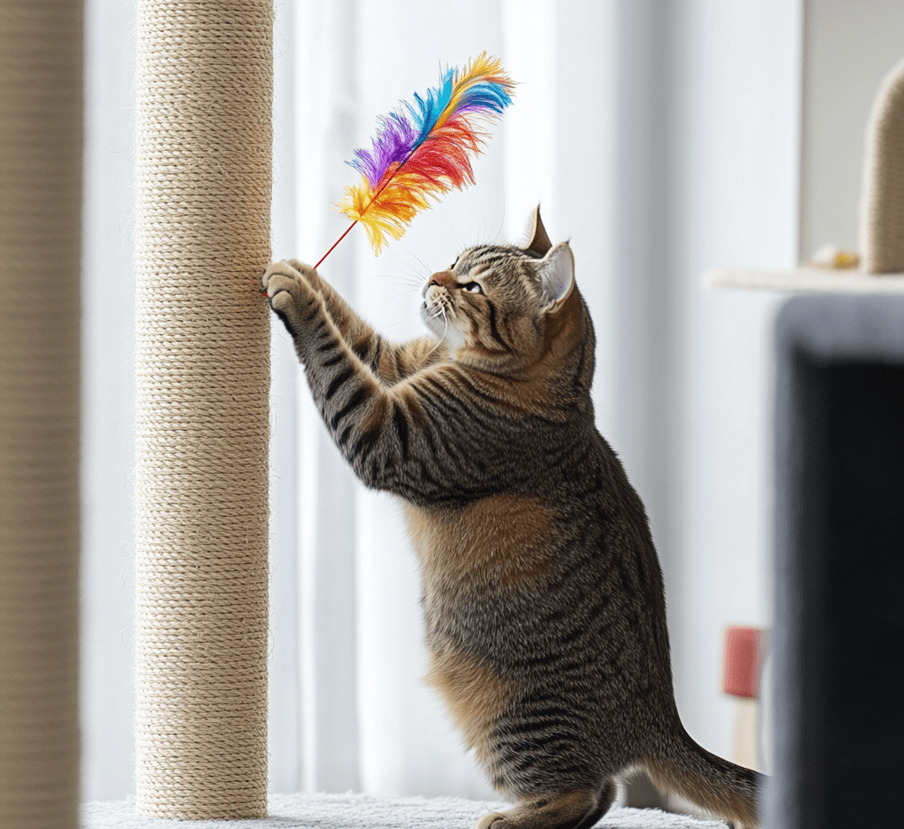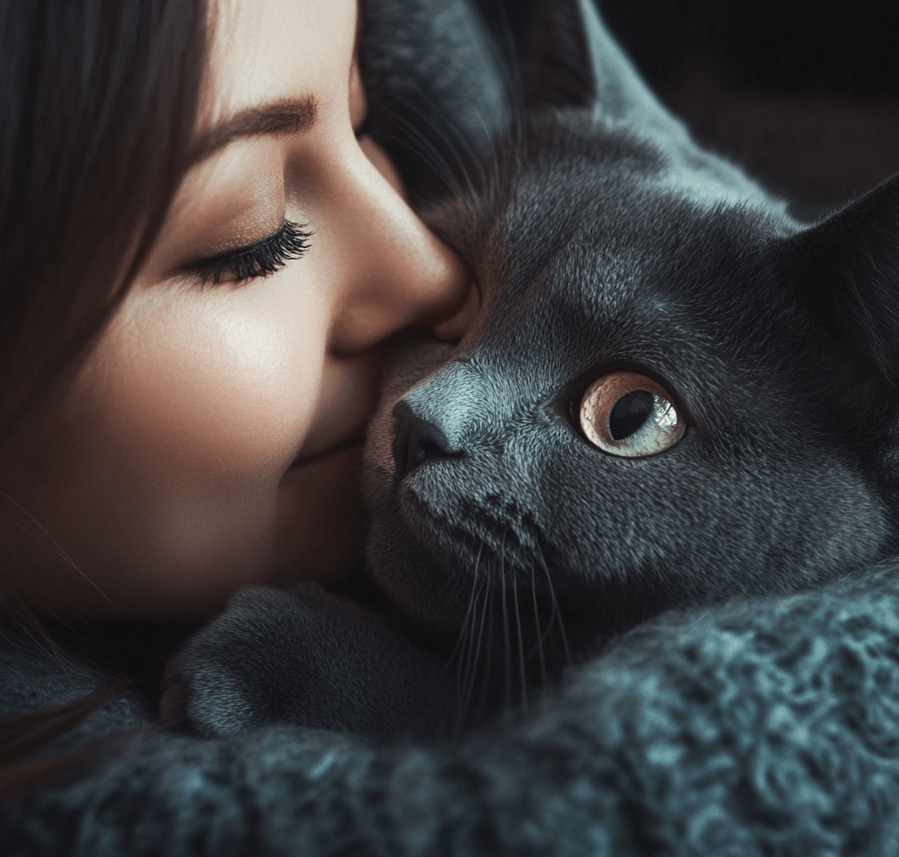
Table of Contents
ToggleWhy Your Domestic Shorthair Eats Too Fast and How to Slow Them Down
If your Domestic Shorthair eats too fast, scarfing down meals in seconds, you’re not alone. This common behavior in Domestic Shorthairs can lead to health issues like vomiting, obesity, or digestive problems. Understanding why your cat eats so quickly and learning how to slow them down is essential for their well-being. This comprehensive guide explores the reasons behind rapid eating in Domestic Shorthairs, the risks it poses, and practical, vet-approved strategies to encourage slower, healthier eating habits. By addressing this issue, you can help your feline friend enjoy meals safely and comfortably.
Why Does Your Domestic Shorthair Eat Too Fast?
Domestic Shorthairs, known for their playful and adaptable nature, may develop fast-eating habits for various reasons. Identifying the cause is the first step to addressing the behavior effectively.

1. Instinctual Behavior
Cats, including Domestic Shorthairs, have ancestral instincts that drive them to eat quickly. In the wild, felines compete for food and eat rapidly to protect their share from rivals. Even in a safe home environment, this instinct can persist, causing your cat to gobble food as if it’s their last meal.
2. Competition in Multi-Cat Households
If you have multiple pets, your Domestic Shorthair may eat quickly to ensure they get enough food before others. This is common in households where cats share feeding spaces or have a history of resource competition.
3. Hunger or Irregular Feeding Schedules
Inconsistent feeding times or prolonged gaps between meals can make your cat overly hungry, leading to rapid eating. Domestic Shorthairs thrive on routine, and disruptions can trigger frantic eating behaviors.
4. Boredom or Stress
Cats may eat too fast as a response to boredom or stress. Domestic Shorthairs are intelligent and curious, and a lack of mental stimulation or environmental changes (e.g., moving homes, new pets) can manifest as eating too quickly.
5. Medical Issues
In some cases, underlying health problems can cause rapid eating. Conditions like hyperthyroidism, diabetes, or gastrointestinal issues may increase appetite or discomfort, prompting your cat to eat faster. Parasites, such as worms, can also drive excessive hunger.
Risks of Eating Too Fast
When a Domestic Shorthair eats too fast, it’s more than just a quirky habit—it can lead to serious health consequences. Understanding these risks highlights the importance of slowing down their eating.
Vomiting or Regurgitation: Gulping food without chewing can cause your cat to regurgitate undigested food shortly after eating, leading to discomfort and nutrient loss.
Choking Hazard: Eating too quickly increases the risk of choking, especially with dry kibble or large pieces of food.
Digestive Issues: Rapid eating can lead to bloating, gas, or indigestion, as the stomach struggles to process large amounts of food at once.
Obesity: Fast eaters may consume more than needed before feeling full, contributing to weight gain and related health issues like diabetes or joint problems.
Dental Problems: Chewing less can lead to plaque buildup and dental disease, as your cat isn’t using their teeth to clean naturally.
Pro Tip: Monitor your cat after meals for signs of discomfort, such as vomiting, lethargy, or excessive grooming, and consult a veterinarian if these occur frequently.
How to Slow Down Your Domestic Shorthair’s Eating
Fortunately, there are many effective strategies to help your Domestic Shorthair eat more slowly, promoting healthier digestion and overall well-being. Below are vet-approved methods to try.

1. Use Slow Feeder Bowls or Puzzle Feeders
Slow feeder bowls and puzzle feeders are designed to make eating more challenging, forcing your cat to work for their food and eat at a slower pace.
Slow Feeder Bowls: These have ridges, mazes, or obstacles that prevent gulping. Look for pet-safe, non-toxic materials like stainless steel or BPA-free plastic.
Puzzle Feeders: These interactive toys dispense small amounts of food as your cat manipulates them, combining mental stimulation with slower eating.
DIY Options: Place a large, clean rock or ping-pong ball in a regular bowl to create a simple obstacle, encouraging your cat to eat around it.
Pro Tip: Start with a simple slow feeder and gradually increase the complexity to keep your Domestic Shorthair engaged without causing frustration.
2. Spread Food Out on a Flat Surface
Instead of using a traditional bowl, spread dry kibble across a large, flat surface like a baking sheet or mat. This forces your cat to eat one piece at a time, slowing their pace and reducing the risk of gulping.
3. Divide Meals into Smaller Portions
Breaking your cat’s daily food allowance into smaller, more frequent meals can reduce hunger-driven speed eating. For example:
1.Feed three to four small meals instead of one or two large ones.
2.Use a timed automatic feeder to dispense portions throughout the day, maintaining a consistent schedule.
This approach mimics a cat’s natural grazing behavior and helps them feel satisfied without overeating.
4. Feed Wet Food
Wet food is softer and often easier to digest than dry kibble, which can encourage slower eating. It also has higher moisture content, supporting hydration and urinary health.
1.Serve wet food in a shallow dish to spread it out, making it harder to gulp.
2.Mix wet and dry food to add variety and slow down eating.
Pro Tip: Warm wet food slightly to enhance its aroma, making it more appealing and encouraging your cat to savor it.
5. Create a Calm Feeding Environment
A stressful or competitive feeding area can cause your Domestic Shorthair to eat too fast. Optimize their feeding space with these tips:
Separate Feeding Stations: In multi-cat households, provide individual feeding areas to reduce competition.
Quiet Location: Place food bowls in a calm, low-traffic area away from loud noises or sudden movements.
Consistent Routine: Feed your cat at the same times each day to reduce anxiety and anticipation.
6. Address Underlying Medical Issues
If your Domestic Shorthair continues to eat too fast despite environmental changes, a veterinary checkup is essential. Your vet may:
1.Run blood tests to check for conditions like hyperthyroidism or diabetes.
2.Perform a fecal exam to rule out parasites.
3.Recommend dietary changes or medications to address underlying issues.
7. Provide Mental and Physical Stimulation
Boredom or excess energy can contribute to rapid eating. Keep your Domestic Shorthair engaged with:
Interactive Toys: Laser pointers, feather wands, or treat-dispensing toys provide mental and physical exercise.
Environmental Enrichment: Add scratching posts, cat trees, or window perches to stimulate exploration.
Playtime Before Meals: A short play session before feeding can reduce pent-up energy and promote calmer eating.
8. Train Your Cat to Eat Slowly
With patience, you can train your Domestic Shorthair to eat more slowly using positive reinforcement:
1.Hand-feed small amounts of food, rewarding calm behavior with praise or a treat.
2.Gradually transition to a slow feeder or puzzle feeder, rewarding your cat for using it correctly.
3.Avoid punishing fast eating, as this can increase stress and worsen the behavior.
Long-Term Strategies for Healthy Eating Habits
Beyond immediate fixes, consider these long-term approaches to maintain healthy eating habits for your Domestic Shorthair:
Maintain a Healthy Weight: Work with your veterinarian to ensure your cat’s diet supports a healthy weight, reducing the risk of obesity-related issues.
Regular Vet Checkups: Annual or biannual visits can catch health problems early, preventing appetite or eating changes.
Monitor Food Intake: Track how much your cat eats daily to ensure they’re getting the right amount without overeating.
Experiment with Feeding Tools: Rotate between slow feeders, puzzle toys, or flat surfaces to keep mealtime engaging and prevent boredom.
Common Mistakes to Avoid
When addressing fast eating in Domestic Shorthairs, steer clear of these pitfalls:
Free-Feeding: Leaving food out all day can encourage overeating and rapid consumption. Stick to scheduled meals.
Ignoring Vomiting: Frequent vomiting after meals may indicate a serious issue. Consult your vet if it persists.
Using Unsafe DIY Feeders: Ensure any homemade feeding solutions are free of sharp edges or small parts that could pose a choking hazard.
Overcomplicating Feeders: Start with simple slow feeders to avoid frustrating your cat, especially if they’re not used to puzzle toys.
Conclusion

When your Domestic Shorthair eats too fast, it’s a behavior that can be managed with the right strategies and understanding. By identifying the root causes—whether instinctual, environmental, or medical—and implementing tools like slow feeders, smaller portions, and a calm feeding environment, you can help your cat develop healthier eating habits. Regular veterinary care, enrichment, and a consistent routine further support their well-being, ensuring mealtimes are safe and enjoyable.
This guide aims to be the ultimate resource for cat owners, offering practical, vet-informed solutions to slow down your Domestic Shorthair’s eating and promote long-term health. With these tips, you’ll be well-equipped to address rapid eating and keep your feline companion thriving.
